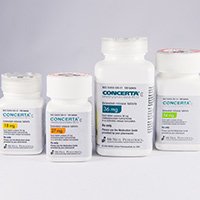Description
Modafinil: An Overview
1. Introduction
Modafinil is a wakefulness-promoting agent that is primarily used to treat sleep disorders, including narcolepsy, obstructive sleep apnea, and shift work sleep disorder. Developed in the 1970s and approved for use in the U.S. in 1998, modafinil has gained popularity due to its potential cognitive-enhancing effects and relatively mild side effect profile compared to traditional stimulants.
2. Mechanism of Action The exact mechanism of action of modafinil is not fully understood, but it is believed to involve several pathways:
- Dopamine Reuptake Inhibition: Modafinil increases dopamine levels in the brain by inhibiting the dopamine transporter, enhancing dopaminergic signaling.
- Effects on Other Neurotransmitters: Modafinil may also influence levels of norepinephrine, serotonin, and histamine, contributing to its wakefulness-promoting effects.
- Hypothalamic Activation: It appears to activate the orexin (hypocretin) system, which plays a crucial role in regulating wakefulness and arousal.
3. Indications Modafinil is indicated for:
- Narcolepsy: Used to reduce excessive daytime sleepiness.
- Obstructive Sleep Apnea: Helps improve wakefulness in patients with sleep apnea, typically in conjunction with other treatments.
- Shift Work Sleep Disorder: Aids individuals who have difficulty staying awake during work hours that fall outside the traditional daytime schedule.
4. Off-Label Uses Modafinil is sometimes used off-label for:
- ADHD: Some studies suggest it may help manage symptoms in adults.
- Cognitive Enhancement: Used by some individuals (including students and professionals) for improved focus and alertness, though evidence supporting this use is mixed.
5. Dosage and Administration Modafinil is typically available in tablet form, with standard dosages being:
- Narcolepsy and Obstructive Sleep Apnea: Usually prescribed at 200 mg once daily in the morning.
- Shift Work Sleep Disorder: Typically 200 mg taken about an hour before the work shift begins.
6. Side Effects
While modafinil is generally well-tolerated, it can cause side effects, including:
- Common Side Effects: Headache, nausea, dizziness, and insomnia.
- Serious Side Effects: Skin rashes, allergic reactions, and psychiatric symptoms such as anxiety or aggression.
- Cardiovascular Effects: In some cases, it may lead to increased heart rate and blood pressure, necessitating monitoring in susceptible individuals.
7. Contraindications and Cautions Modafinil is contraindicated in certain situations:
- Hypersensitivity: Individuals with a known allergy to modafinil or armodafinil should avoid it.
- Heart Conditions: Caution is advised for those with a history of cardiovascular issues due to potential increases in blood pressure and heart rate.
- Pregnancy and Breastfeeding: Its safety during pregnancy and lactation is not well-established, so risks should be assessed by a healthcare provider.
8. Drug Interactions Modafinil can interact with several medications, including:
- Hormonal Contraceptives: May reduce their effectiveness, leading to potential unintended pregnancies.
- Antidepressants: Some interactions could enhance or diminish the effects of antidepressant medications.
- Other CNS Stimulants: Concurrent use may increase the risk of side effects.
9. Monitoring and Follow-Up Patients taking modafinil should be monitored for:
- Effectiveness: Regular assessments of sleepiness and cognitive function.
- Side Effects: Monitoring for any adverse reactions, especially during the initial stages of treatment.
- Cardiovascular Health: Routine checks for blood pressure and heart rate, particularly in patients with pre-existing conditions.
10. Conclusion Modafinil is an effective medication for managing excessive daytime sleepiness associated with various sleep disorders. While it offers several advantages, including a favorable safety profile compared to traditional stimulants, it is important for users to be aware of potential side effects and drug interactions. Engaging with healthcare providers for tailored treatment plans and regular monitoring is crucial for optimal outcomes.
References
For more detailed information, consult resources such as the National Institutes of Health (NIH), the American Academy of Sleep Medicine, and peer-reviewed journals focused on sleep medicine and pharmacology.
If you have specific areas you’d like to explore further or additional questions about modafinil, feel free to ask!






Reviews
There are no reviews yet.